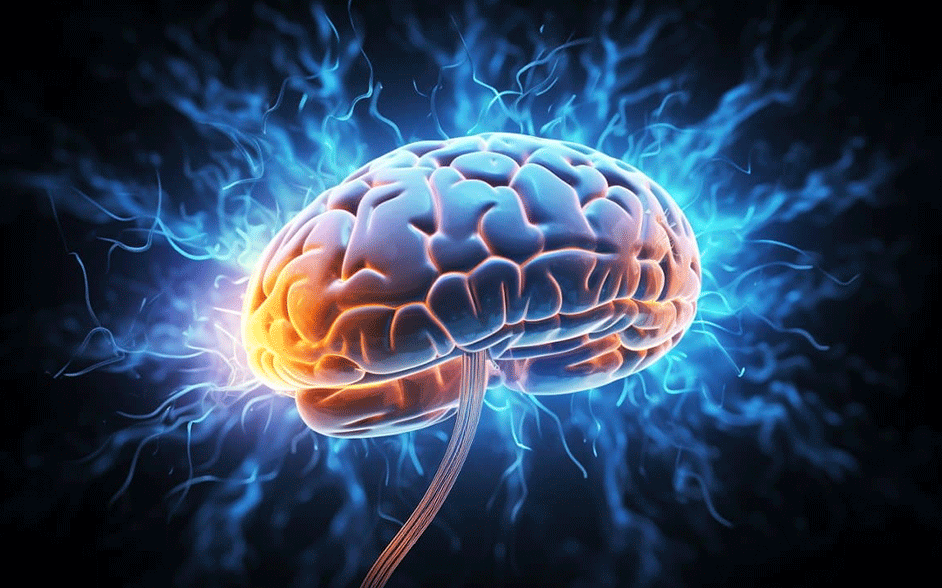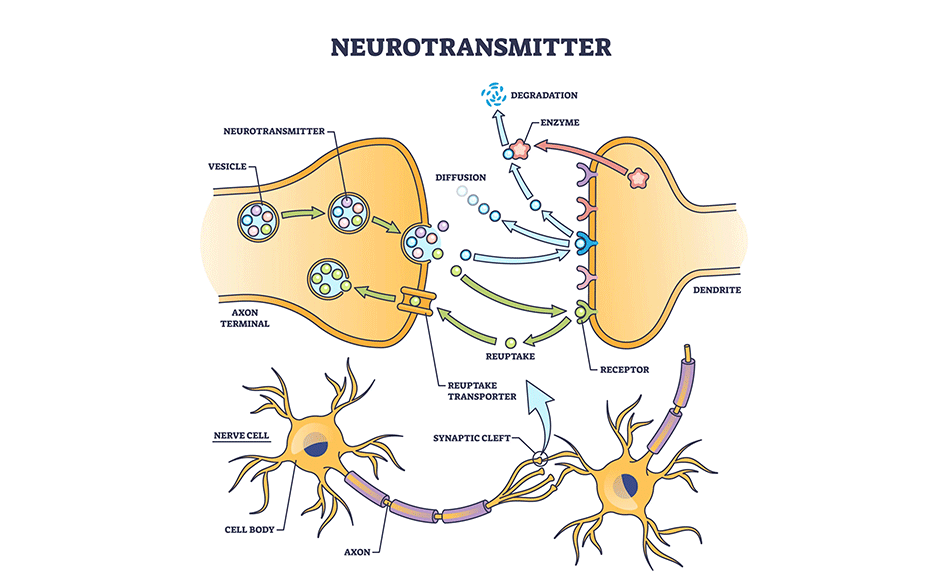- Mumbai, New Delhi, Bangalore
- (+91) 81518 30000
- WhatsApp Now
- contact@vedawellnessworld.com
Substance abuse is a pervasive issue that affects millions of individuals worldwide. Beyond the visible social and health repercussions, it causes profound changes within the brain. These changes can alter mood, behaviour, cognition, and overall mental health. Understanding how substance abuse affects the brain can provide valuable insights into addiction, its treatment, and pathways to recovery.
The brain’s reward system, primarily involving the mesolimbic dopamine pathway, is central to understanding addiction. This pathway includes key structures such as the nucleus accumbens, ventral tegmental area (VTA), and prefrontal cortex.
Most addictive substances, including alcohol, nicotine, cocaine, and opioids, increase the release of dopamine in the brain. Dopamine is a neurotransmitter that produces feelings of pleasure and reward. This surge of dopamine reinforces the behaviour, encouraging repeated use of the substance.
“Addiction is commonly identified with habitual nonmedical self-administration of drugs. It is usually defined by characteristics of intoxication or by characteristics of withdrawal symptoms. Such addictions can also be defined in terms of the brain mechanisms they activate; most addictive drugs cause elevations in extracellular levels of the neurotransmitter dopamine. Animals are unable to synthesise or use dopamine lack the conditioned reflexes discussed by Pavlov or the appetitive behavior discussed by Craig; they have only unconditioned consummatory reflexes. Burst discharges (phasic firing) of dopamine-containing neurons are necessary to establish long-term memories associating predictive stimuli with rewards and punishers. Independent discharges of dopamine neurons (tonic or pacemaker firing) determine the motivation to respond to such cues. As a result of habitual intake of addictive drugs, dopamine receptors expressed in the brain are decreased, thereby reducing interest in activities not already stamped in by habitual rewards.”
The repeated activation of the reward system leads to changes in synaptic plasticity, the ability of synapses (the connections between neurons) to strengthen or weaken over time. This process is crucial for learning and memory but can also cement the behaviours associated with drug use, making them more habitual and harder to break.
Chronic substance abuse induces structural changes in the brain, affecting both grey and white matter.
Long-term use of drugs like cocaine, methamphetamine, and alcohol can reduce the density of grey matter in regions responsible for decision-making, impulse control, and emotional regulation, such as the prefrontal cortex and anterior cingulate cortex. This reduction can impair cognitive functions and increase susceptibility to mental health issues.
“Since the first study in stimulant-dependent individuals using structural MRI was published fifteen years ago, much evidence has accumulated on brain abnormalities associated with stimulant drug dependence. Here we conducted a voxel-based morphometry meta-analysis of published MRI data in stimulant-dependent individuals to clarify the most robust abnormalities underlying the disorder. We found that neuroimaging studies in stimulant-dependent individuals consistently report a grey matter decline in the prefrontal cortex regions associated with self-regulation and self-awareness.”
White matter consists of myelinated nerve fibres that facilitate communication between different brain regions. Substance abuse can damage white matter integrity, leading to disruptions in neural communication. This damage can manifest as difficulties in cognitive tasks, poor decision-making, and impaired executive functions.
“Using tract-based spatial statistics, we found that using more substances was linked to lower fractional anisotropy, which measures white matter (WM) integrity. We also found that using more substances was linked to higher radial diffusivity in the prefrontal lobe, indicating more demyelination. However, we didn’t find a direct link between the amount of substance use and WM changes. These results suggest that pre-existing white matter abnormalities in the prefrontal lobe might make people more vulnerable to using multiple substances, though we can’t rule out that substance use itself might cause these changes.”

Substance abuse not only alters brain structure but also affects how different brain regions function and interact.
The prefrontal cortex, which governs decision-making and impulse control, is particularly vulnerable to the effects of substance abuse. Changes in this region can result in poor judgment, risky behaviors, and an increased likelihood of relapse.
Chronic drug use can dysregulate the brain’s stress response systems, including the hypothalamic-pituitary-adrenal (HPA) axis. This dysregulation can lead to heightened stress sensitivity, anxiety, and depression, perpetuating the cycle of addiction as individuals may use substances to self-medicate these negative feelings.
The amygdala, a region involved in processing emotions, can become hyperactive or hypoactive with chronic substance abuse. This alteration can contribute to mood swings, heightened emotional reactivity, and difficulties in managing emotions.
Substance abuse profoundly impacts various neurotransmitter systems beyond dopamine.
Glutamate is the primary excitatory neurotransmitter in the brain, while GABA is the main inhibitory neurotransmitter. Substance abuse can disrupt the balance between these systems, leading to neurotoxicity, cognitive deficits, and increased risk of seizures and anxiety.
Drugs like MDMA (ecstasy) and LSD affect serotonin levels, which regulate mood, appetite, and sleep. Alterations in serotonin pathways can lead to mood disorders, sleep disturbances, and changes in appetite.
Opioids (e.g., heroin, prescription painkillers) mimic the effects of endogenous (naturally occurring) opioids in the brain. Chronic opioid use can lead to changes in the brain’s pain and reward systems, resulting in increased pain sensitivity and a diminished ability to experience pleasure from natural rewards.

Despite the detrimental effects of substance abuse, the brain retains the ability to recover and heal through neurogenesis (the formation of new neurons) and neuroplasticity.
The hippocampus, a brain region critical for learning and memory, is one of the few areas where neurogenesis occurs throughout life. Substance abuse can impair this process, but abstinence and certain treatments can promote the regeneration of neurons and improve cognitive function.
Cognitive-behavioral therapy (CBT), mindfulness-based interventions, and other therapeutic approaches can help rewire the brain by promoting healthy behaviors, reducing cravings, and enhancing emotional regulation.
Medications such as methadone, buprenorphine, and naltrexone can assist in normalizing brain chemistry, reducing withdrawal symptoms, and supporting long-term recovery.
Engaging in regular physical exercise, maintaining a balanced diet, practicing mindfulness and meditation, and fostering strong social connections can all support brain health and recovery.
The impact of substance abuse on the brain is profound and multifaceted, affecting everything from neurochemistry to brain structure and function. However, the brain’s remarkable capacity for neuroplasticity and recovery offers hope. With appropriate interventions, support, and a commitment to change, individuals struggling with addiction can heal their brains and reclaim their lives. Understanding these changes is crucial for developing effective treatments and supporting long-term recovery.
1. Wise, R.A., and Robble, M.A., (2020) Dopamine and Addiction, Annual review of Psychology, 71, 79-106.